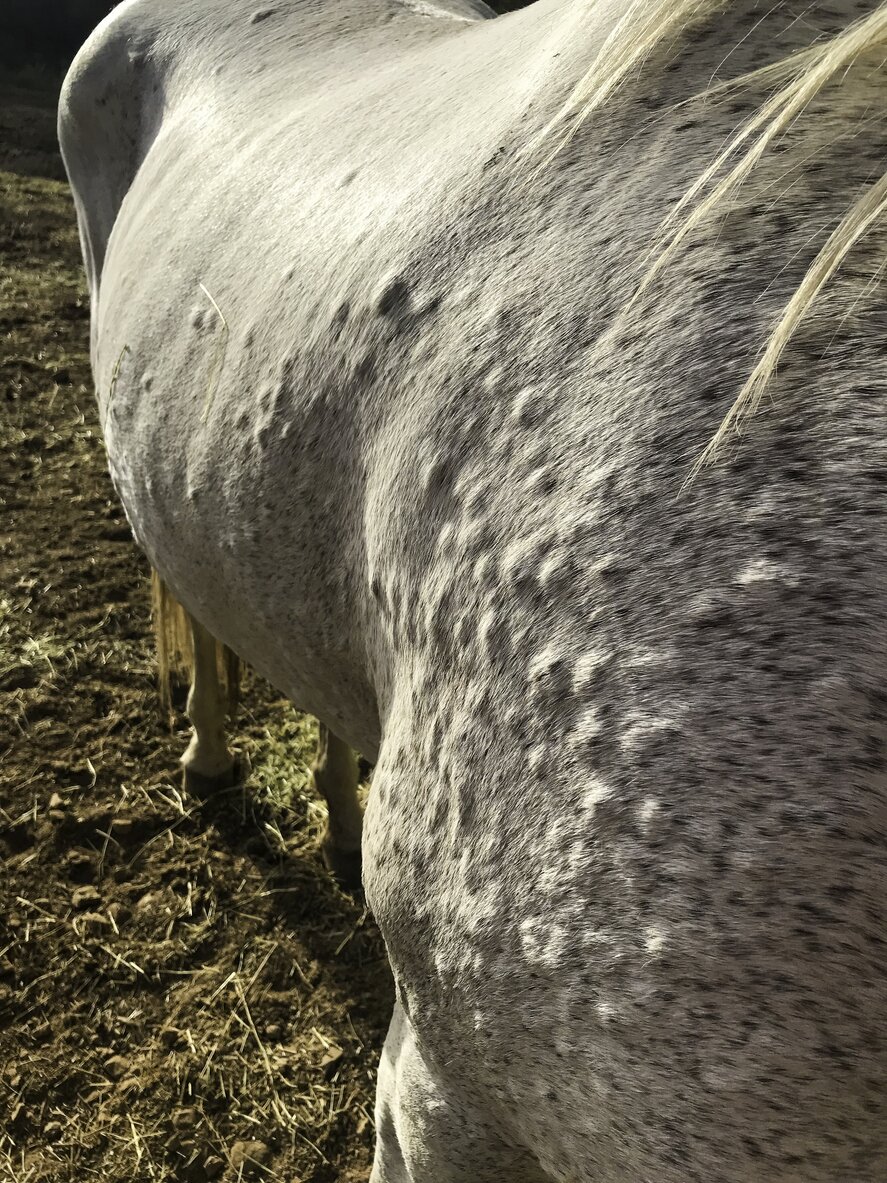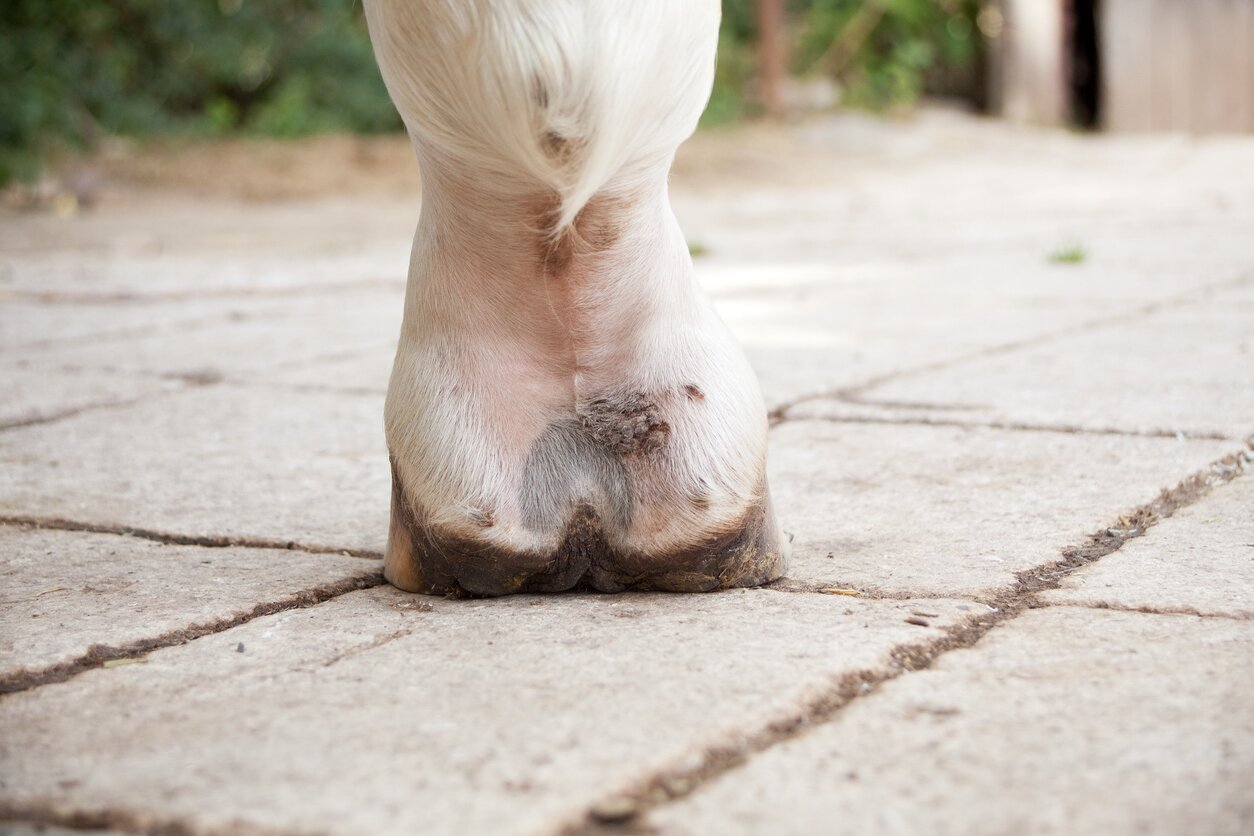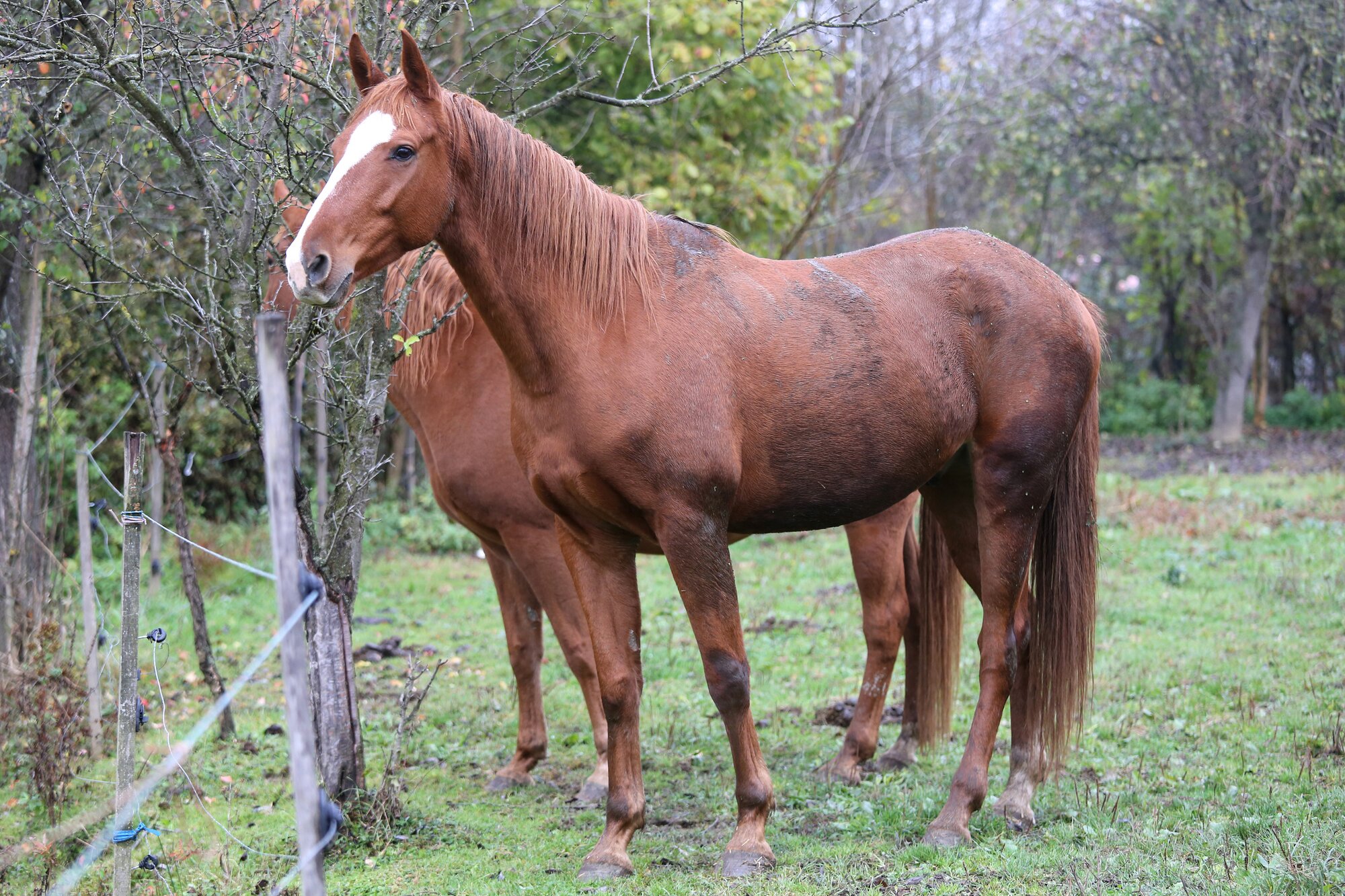Rain scald, sometimes called dermatophilosis, is a common bacterial skin infection that loves to pop up in horses, especially when things get a bit wet and humid. It's caused by a bacterium, Dermatophilus congolensis, which just loves to sneak into the skin through tiny scrapes or even insect bites when your horse is constantly damp.
You'll spot it by matted hair, crusts, and scabs, usually along their back, rump, and neck. When these scabs come off, you might see raw skin underneath, sometimes even with a bit of pus. It can look a bit like "paint brush" lesions because the hair comes out in clumps. While it's generally not life threatening, rain scald can be pretty uncomfortable for your horse, and in some serious cases, it could even lead to other infections.
Keeping rain scald at bay
The best way to avoid rain scald is to keep your horse as dry as possible and maintain good skin hygiene. Think about giving them a good shelter, like a stable or a shelter shed, for those really soggy days. Regular grooming is super important too, removing dirt and mud allows the skin to breathe and makes it harder for bacteria to set up shop.
If you're using rugs, make sure they're clean, dry, and breathable, because a wet or dirty rug can just trap moisture against their skin and make things worse. Keeping those pesky flies and biting insects under control can also help, as they can create those tiny skin punctures where the bacteria can get in.
Treating rain scald
If your horse does get rain scald, jumping on it quickly is key to stopping it from getting worse. For mild cases, a good wash with an antiseptic shampoo (look for ones with chlorhexidine or povidone-iodine) and then thorough drying is often sufficient. Gently removing any scabs helps the medication reach the skin, but be careful not to irritate it further.
For more severe or widespread cases, your vet might prescribe some special washes or even antibiotics. After treating it, remember to keep up with those preventative measures to stop it from coming back. Regularly checking your horse's skin, especially when the weather's wet, will help you spot any signs early so you can nip it in the bud.




